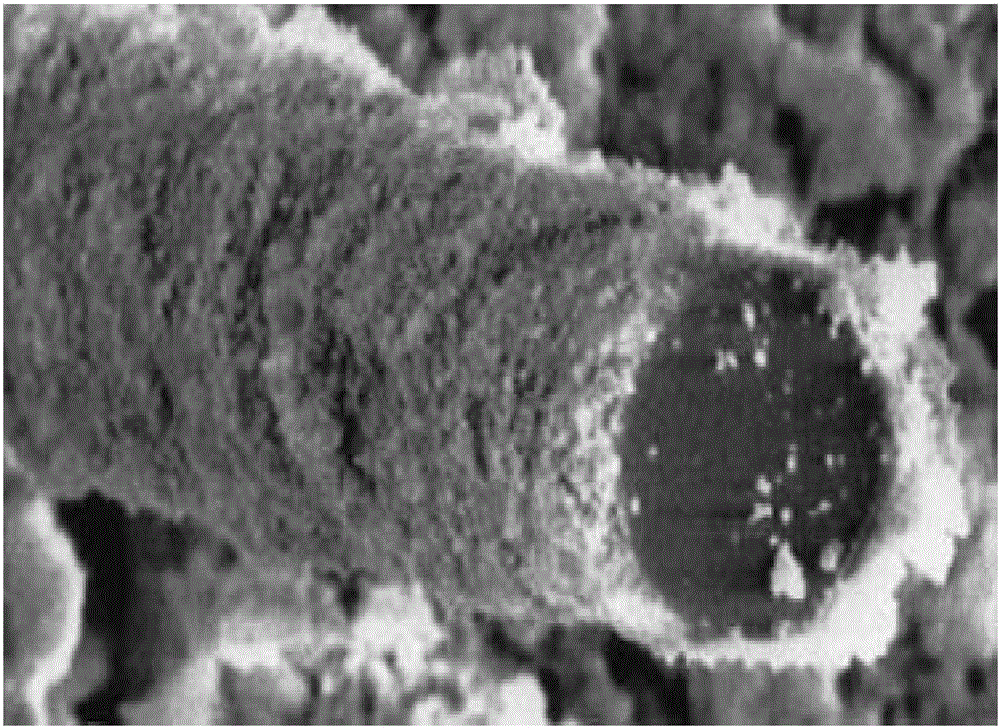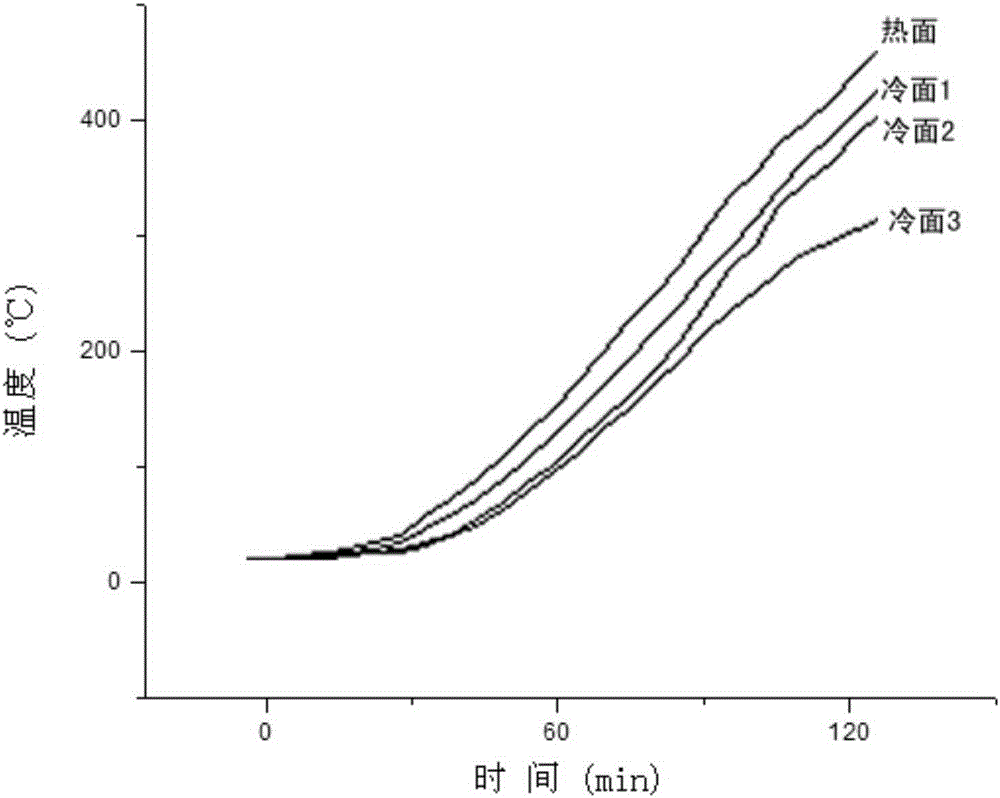Preparation method of glass wool with low heat conductivity coefficients
A technology of thermal conductivity and glass wool, which is applied in the field of glass wool preparation, can solve problems such as long-term planning and development, lack of suitable materials for heat preservation, and unfavorable social sustainable development.
- Summary
- Abstract
- Description
- Claims
- Application Information
AI Technical Summary
Problems solved by technology
Method used
Image
Examples
Embodiment 1
[0095] nano-SiO 2 , has the following basic properties: the specific surface area is 200±25m 2 / g; loss on drying is 1% (drying at 100°C for 2h); loss on ignition is 4% (burning at 1000°C for 2h); purity is 99.8%; pH value of suspension is 3.7~4.7 (4% water suspension Turbid liquid); the bulk density is 50g / L; the particle size range is 10nm to 20nm; the average particle size is about 15nm.
[0096] 11g of nano-SiO 2 Add it into 73g of the above-mentioned glass fibers, and stir at a speed of 100r / min for 1 hour, so that the nanoparticles are uniformly attached to the surface of the glass fibers, and a composite of nanoparticles and glass fibers is obtained.
[0097] Spray 8g of acrylic resin binder (provided by the factory for direct spraying) into the composite of the above-mentioned nanoparticles and glass fibers, and then put it into a mold and use a YES-300 pressure testing machine for compression molding. During the pressing process, the pressure was first applied slow...
Embodiment 2
[0100] In addition to adding 5.5g of nano-SiO 2 The same method as in Example 1 was used to prepare the glass wool of the present invention except for 5.5 g of silicon carbide (with a particle size ranging from 2 μm to 4 μm; an average particle size of about 3 μm).
[0101] The results of the back temperature test were as follows: image 3 shown. It can be seen that the maximum temperature difference between the hot surface and the cold surface 3 of the glass wool is 131 degrees, and the gap tends to widen.
Embodiment 3
[0103] In addition to adding 5.5g of nano-SiO 2 , 5.0g of silicon carbide (the particle size range is 2μm~4μm; the average particle size is about 3μm), 0.5g nano-Al 2 o 3 (The average particle diameter is about 30nm~about 50nm), adopt the same method as Example 1 to prepare the glass wool of the present invention.
[0104] The results of the back temperature test show that the thermal insulation effect of the glass wool is better than that of Example 2.
PUM
| Property | Measurement | Unit |
|---|---|---|
| Bulk density | aaaaa | aaaaa |
| Particle size | aaaaa | aaaaa |
| The average particle size | aaaaa | aaaaa |
Abstract
Description
Claims
Application Information
 Login to View More
Login to View More - R&D
- Intellectual Property
- Life Sciences
- Materials
- Tech Scout
- Unparalleled Data Quality
- Higher Quality Content
- 60% Fewer Hallucinations
Browse by: Latest US Patents, China's latest patents, Technical Efficacy Thesaurus, Application Domain, Technology Topic, Popular Technical Reports.
© 2025 PatSnap. All rights reserved.Legal|Privacy policy|Modern Slavery Act Transparency Statement|Sitemap|About US| Contact US: help@patsnap.com



